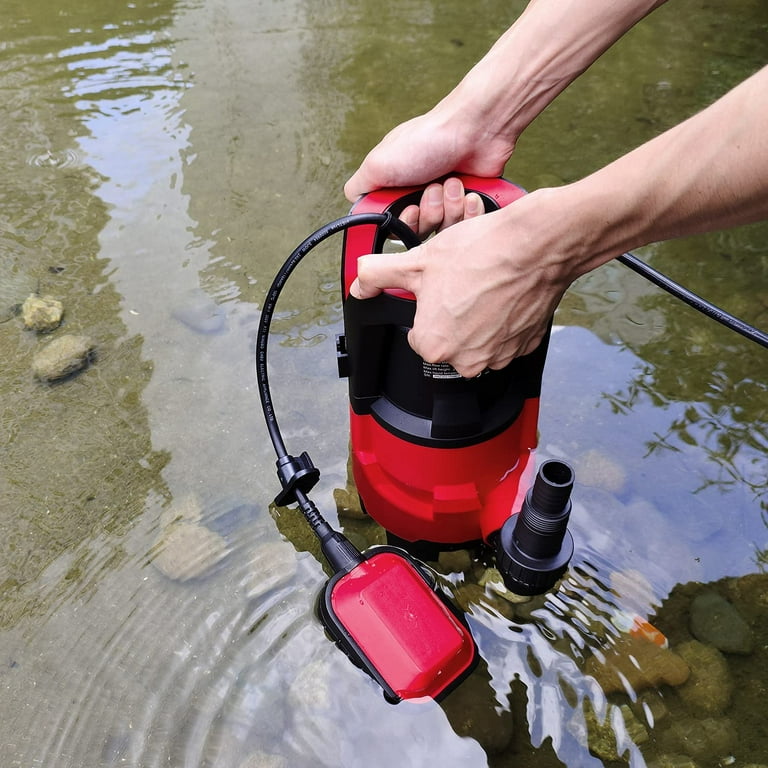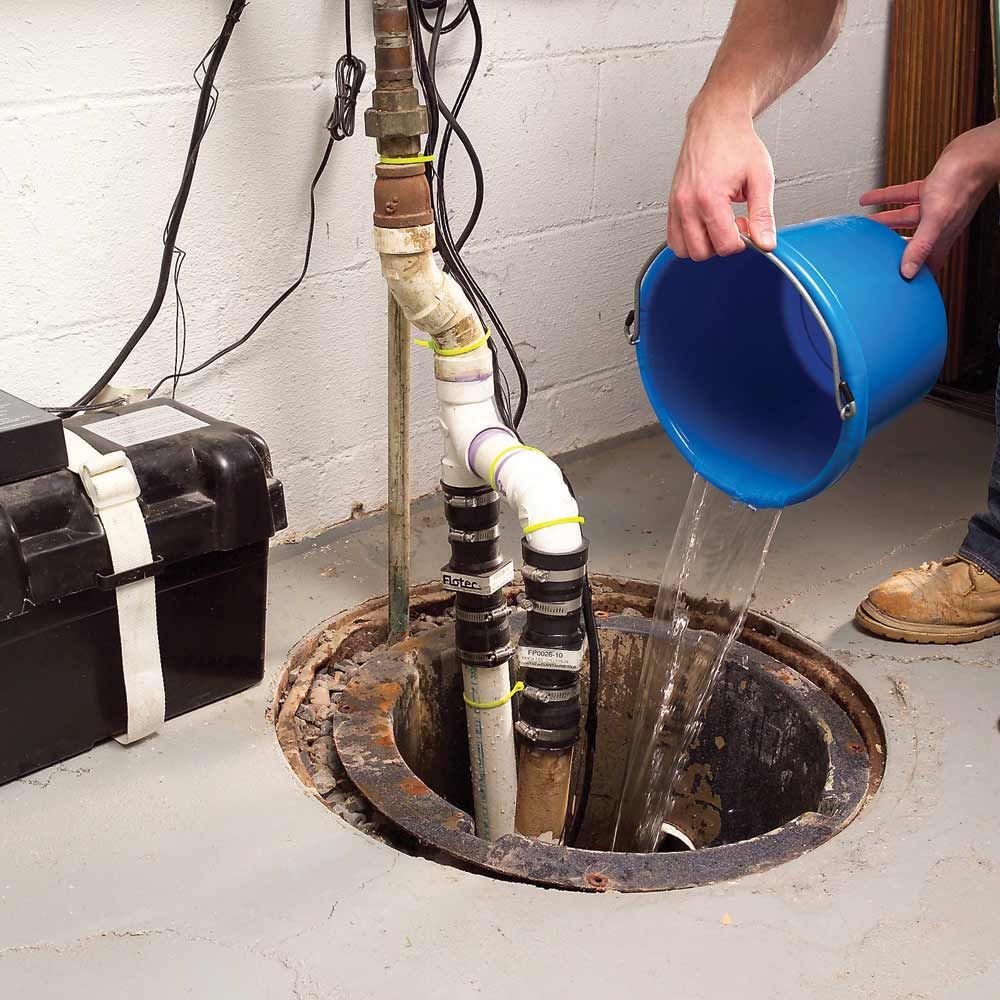We have found this post involving How to Care for Your Sump Pump below on the internet and felt it made sense to share it with you on my blog.

Sump pumps are important elements in many homes, especially in areas susceptible to flooding or extreme dampness. They help avoid water damages by successfully eliminating excess water from cellars or crawl spaces. However, like any other appliance, sump pumps require normal upkeep to ensure they work successfully when required the most. Cleansing your sump pump is an essential part of its maintenance, and recognizing exactly how to do it correctly can conserve you from pricey repairs and prospective calamities.
Introduction
Preserving a clean sump pump is important for its correct performance and long life. Ignoring this necessary job can cause clogs, breakdowns, and eventually, water damages to your residential or commercial property. For that reason, learning exactly how to clean a sump pump is essential for property owners who rely upon these devices to keep their cellars dry and protected.
Signs of a Dirty Sump Pump
Understanding when your sump pump requires cleaning is crucial for protecting against possible breakdowns. Some typical signs that indicate an unclean sump pump consist of strange sounds throughout operation, reduced water flow, and noticeable particles in the pit. If you discover any of these signs, it's important to clean your sump pump immediately to prevent any type of additional issues.
Preparing for Cleaning
Prior to you begin cleaning your sump pump, it's necessary to take some safety precautions. Beginning by shutting down the power to the pump to stay clear of any kind of electrical crashes. In addition, put on appropriate protective gear, such as gloves and safety glasses, to shield on your own from dirt, particles, and prospective virus.
Comprehending the Sump Pump
Prior to diving into the cleaning process, it's essential to have a standard understanding of just how a sump pump works. Usually installed in a pit or container below the basement floor, a sump pump consists of numerous essential components, consisting of a pump, a float switch, and a discharge pipe. When water builds up in the pit, the float button triggers the pump, which after that pumps the water out with the discharge pipe, away from the building's foundation.
Detailed Guide to Cleaning a Sump Pump
Shutting down the Power
Begin by disconnecting the power supply to the sump pump to avoid any accidents while cleaning.
Looking For Appropriate Functioning
Prior to reinstalling the pump, do a quick test to make certain that the float switch triggers the pump appropriately. Put some water right into the sump pit and observe the pump's procedure. If whatever is working correctly, you can rebuild the pump and reconnect the power supply.
Eliminating Particles and Dirt
Use a pail or an inside story to eliminate any noticeable particles, dirt, or debris from the sump pit. Dispose of the debris appropriately to stop it from clogging the pump or the discharge pipe.
Cleansing the Pump and Drift Switch
Once the pit is clear of debris, carefully remove the pump from the pit. Check the pump and the float button for any type of indicators of damage or wear. Make use of a soft brush or fabric to clean the surfaces and get rid of any built up crud.
Purging the System
After cleaning up the pump and float switch, flush the sump pit with tidy water to remove any type of remaining dirt or debris. This will assist make certain that the pump operates efficiently and effectively.
Upkeep Tips to Keep Your Sump Pump Clean
Along with regular cleansing, there are numerous maintenance suggestions you can comply with to maintain your sump pump in ideal condition:
Verdict
Cleansing your sump pump is an important facet of its upkeep and makes certain that it operates successfully when you need it the most. By complying with the steps laid out in this guide and including normal upkeep into your regimen, you can extend the life expectancy of your sump pump and protect your home from water damage.
6 STEPS ON HOW TO CLEAN A SUMP PUMP PROPERLY
UNDERSTANDING SUMP PUMPS
Your sump pump plays a crucial role in protecting your home by managing and removing excess water. It primarily functions as a “shield”, guarding your basement against the damaging effects of water accumulation. The pump is housed in a sump pit in the lowest part of your basement, and its job is to pump out any water that collects there.
During heavy rainfalls or when snow melts rapidly, water can infiltrate your basement, posing potential risks like flooding, structural damage, and harmful mold growth. Here, the sump pump springs into action, pumping out the intruding water and directing it away from your home.
SAFETY FIRST
Before cleaning, remember to prioritize safety. Disconnect the sump pump from the power source to prevent any accidental electric shocks. Also, wear sturdy gloves to protect your hands from any sharp or dirty components within the pump.
REMOVE THE SUMP PUMP
After ensuring your safety, the next step is to remove the sump pump from its pit. Doing this might require careful maneuvering as you don’t want to damage any pump components. Once removed, clean the sump pit to remove any accumulated debris or sludge.
INSPECT THE PUMP
Inspect the pump for any visible signs of wear or damage. Check the power cord, float switch, and impeller housing. If any components look worn out or damaged, consider replacing them to ensure optimal performance.
CLEAN THE PUMP
Thoroughly clean the pump with warm, soapy water. Make sure to rid it of any dirt, gravel, or other debris that might impede its performance. You can use a toothbrush to clean the small, hard-to-reach parts of the pump.
REINSTALL THE SUMP PUMP
Reinstall the pump into the sump pit Make sure it’s positioned correctly to remove the water effectively Once it’s back in place, reconnect it to the power source TEST THE PUMP
Finally, pour some water into the pit to ensure the pump works correctly. It should start automatically and begin pumping out the water; if it doesn’t, check the power source and the positioning of the pump.
Remember, while cleaning your sump pump is an essential part of home maintenance, hiring a professional plumber for a thorough inspection and cleaning at least once a year is also important. This will ensure that your pump is in optimal condition, ready to protect your home from potential water damage.
BEST PRACTICES FOR CLEANING SUMP PUMP DISCHARGE PIPES
Regular Inspection: Regularly inspect your discharge pipes, especially during heavy rainfall or snowmelt periods. Look for any signs of blockage or damage. Early detection of problems can prevent serious issues down the line. Periodic Cleaning: Over time, sediment and debris can accumulate in the discharge pipes, impeding the flow of water. Regular cleaning helps keep the pipes clear and functioning efficiently. You can use a high-pressure water jet to effectively clean the pipes. Insulation During Winter: In colder climates, discharge pipes can freeze, blocking the outflow of water. Protect your discharge pipes from freezing temperatures by insulating them with foam pipe insulation. This will ensure the sump pump can continue to discharge water even in freezing conditions. Proper Positioning: The discharge pipe should be positioned to direct water away from your home’s foundation. Improper positioning can lead to water seeping back into the basement. Ensure the pipe is long enough and angled correctly. Installation of a Check Valve: A check valve prevents water from flowing back into your sump pit after the pump has pushed it out. Installing a check valve helps maintain the efficiency of your sump pump and reduces the risk of flooding. Minimize Pipe Turns: Every curve or turn in the discharge pipe can decrease the efficiency of water flow. By minimizing turns and bends in your discharge pipe, you can increase the efficiency of your sump pump. https://www.fullspeedplumbing.com/how-to-clean-a-sump-pump-properly9999/

We had been brought to that article on How to Care for Your Sump Pump from an associate on our other web page. Sharing is caring. You won't know, you may very well be helping someone out. Bless you for being here. Come back soon.
Call Today